Here are some of the Arctic animal species you may see while you are on
Polar Bear
Polar Bears are the largest types of bear, and might as well be considered the kings of the North. They are slightly more elusive in the Canadian Arctic and in Greenland, but you are sure to spot one in Spitsbergen.
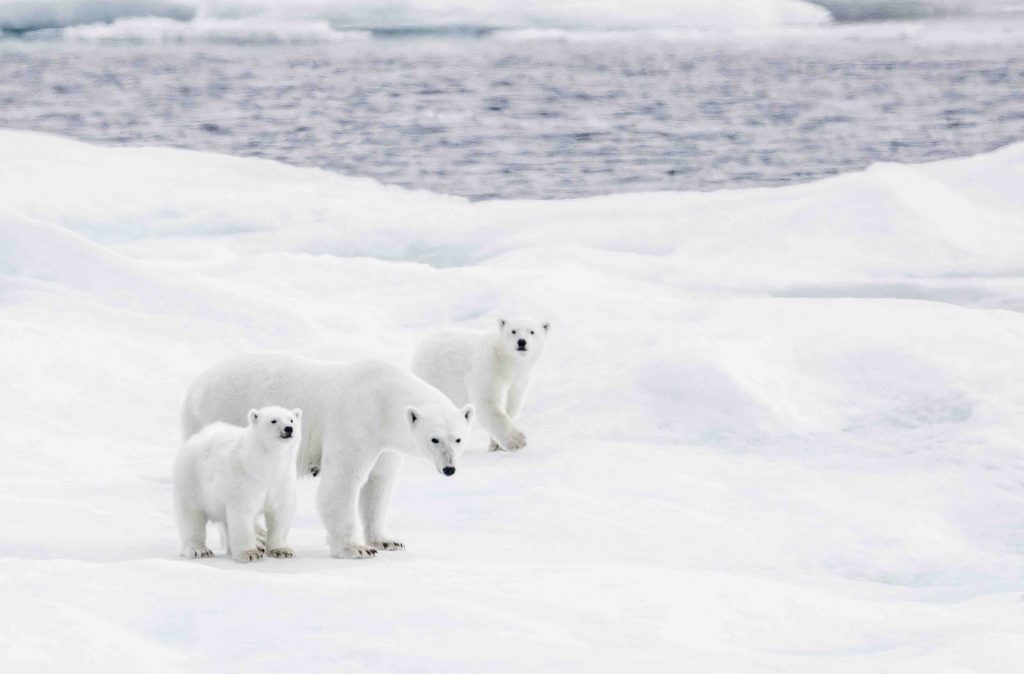
Walrus
Highly recognizable – the walrus population is slowly increasing as protection laws have been implemented. They were nearly hunted to extinction for their highly prized blubber, but the population is making a comeback. They are highly social and live in large packs, and their tusks are used to haul themselves up onto icebergs, banks and rocks.
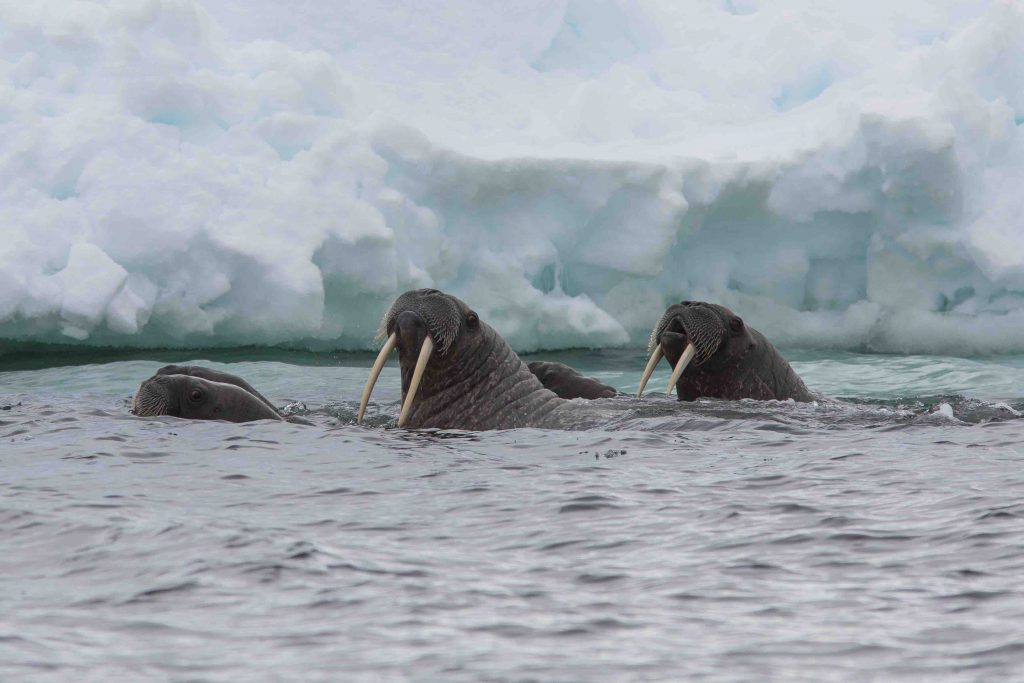
Arctic Fox
The arctic fox has adapted to survive the cold harsh winters of the arctic. Their fur changes colour with the seasons for camouflage- white in the winter and brown in the summer.

Arctic Hare
The arctic hare has smaller ears and noses than other hare species in order to retain heat. Also, 20% of their body is composed of fat for extra insulation. Despite this, they are incredibly fast, able to run as fast as 60 kilometres an hour.
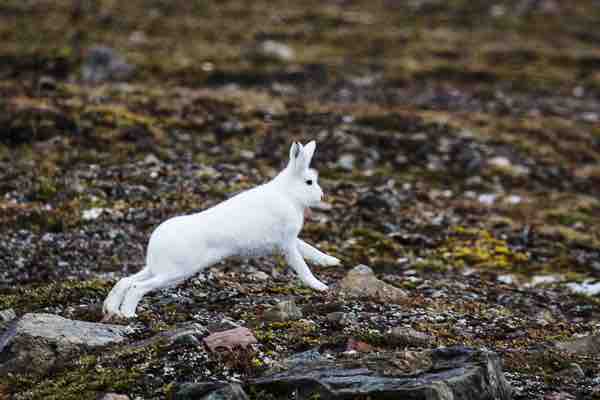
Beluga Whale
The beluga whale’s colouring allows them to blend with the floating sea ice. They are highly social creatures, usually living in pods of up to ten or more.

Caribou/Reindeer
The Name Caribou is derived from the Mi’Kmaq word “qualipu”. The

Musk-Ox
The Musk-ox got its name because of the musk odour that males release during the mating season to attract females. They can be quite elusive, and tend to be seen more inland.
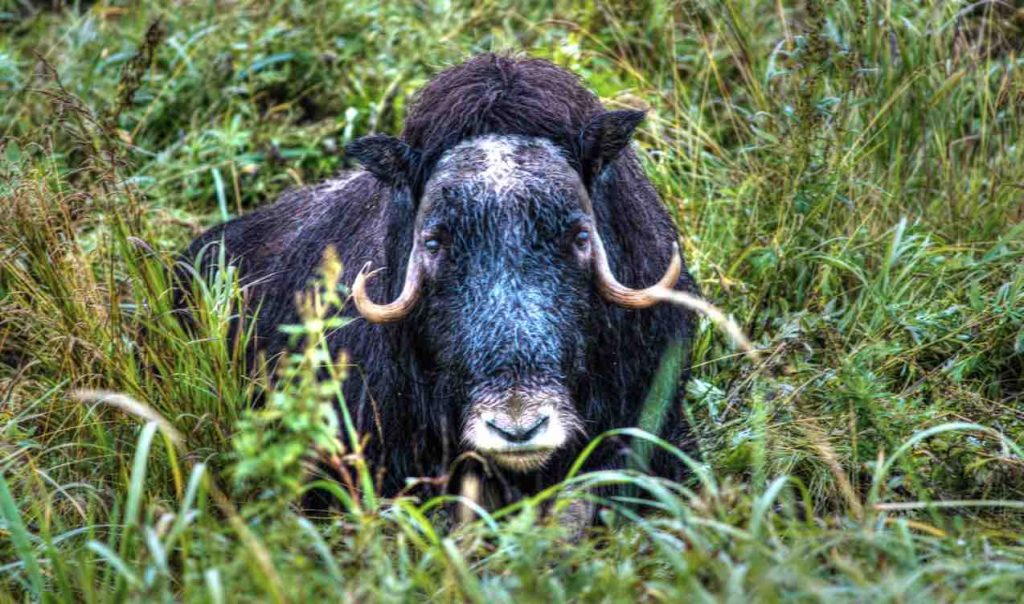
Narwhal
Narwhals are very tricky to spot as their colouring allows them to go unnoticed in the water, though their tusks can occasionally be seen poking above the surface. In addition, they can only be seen in arctic waters and tend to be quite shy.
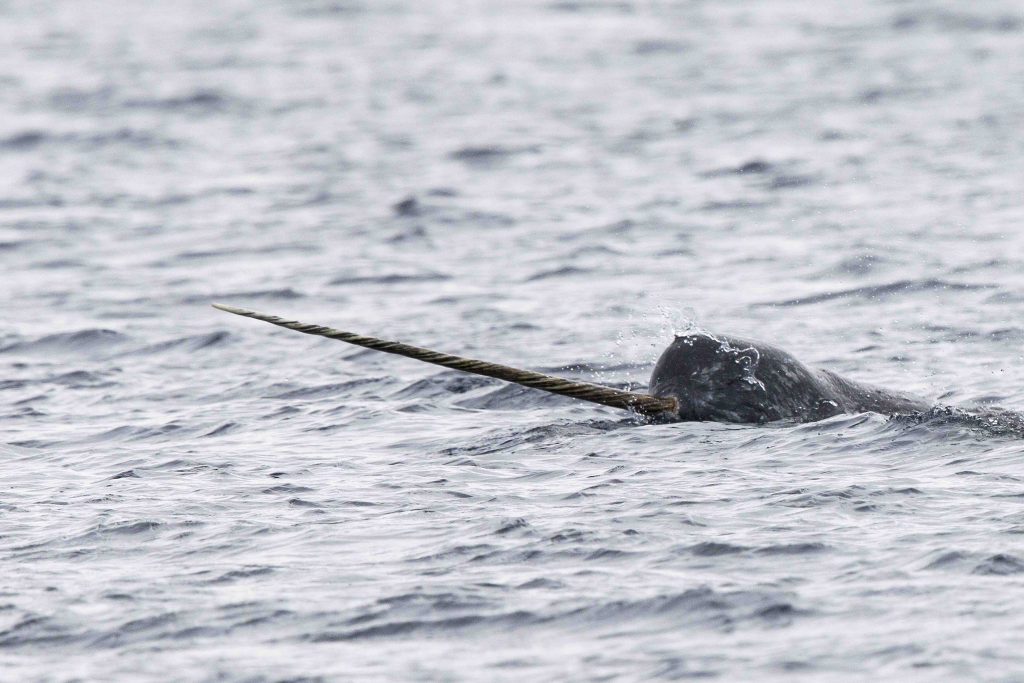
Seals

Arctic Wolf
There are 9 subspecies of the grey wolf that can be found in the Arctic regions. They tend to be smaller and have whiter fur than the grey wolf.
Puffins
Puffins are nicknamed “sea-parrots” or “clowns of the sea” because of their beaks. Their beaks actually change colour depending on the season, turning bright orange during the mating season and a dull gray in the winter.
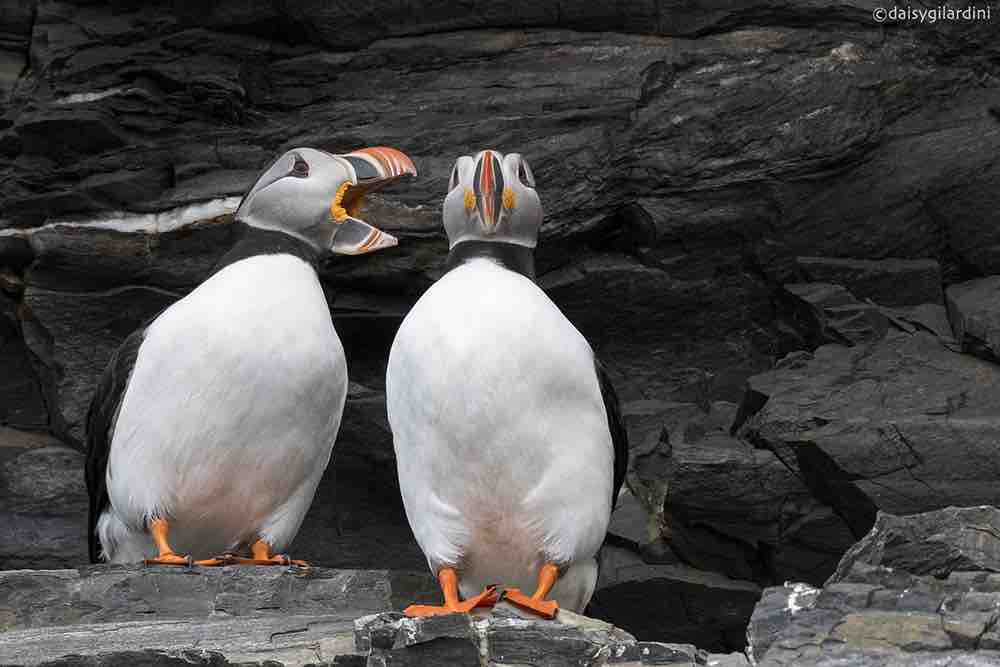
Arctic Sea Birds
If you are interested in finding more about the specific seabird species you can see in the Arctic, check out our Arctic Bird blog. You can also find out more about Arctic seabirds with guest blogger and researcher Susan Wong, who details her research onboard assessing the distribution of arctic seabirds.
Orcas
Orcas tend to be found in the arctic during the summer months. To avoid getting trapped in the ice, they will migrate south for the winter months. Orcas are apex predators, meaning they do not fall prey to any other species.

Wolverines
Wolverines are not actually related to the wolf family but are in fact part of the same family as the weasel. Wolverines can be quite ferocious, sometimes scaring away bears with their snarls and aggressive behaviour. Wolverines are quite elusive, and pictures are hard to come by.
Hump b ack Whale
Humpback whales are approximately the

If you are interested in catching a glimpse of these arctic animals yourself – join us on an expedition to the great north. Have a chat with your preferred travel agent, or contact us directly HERE.















